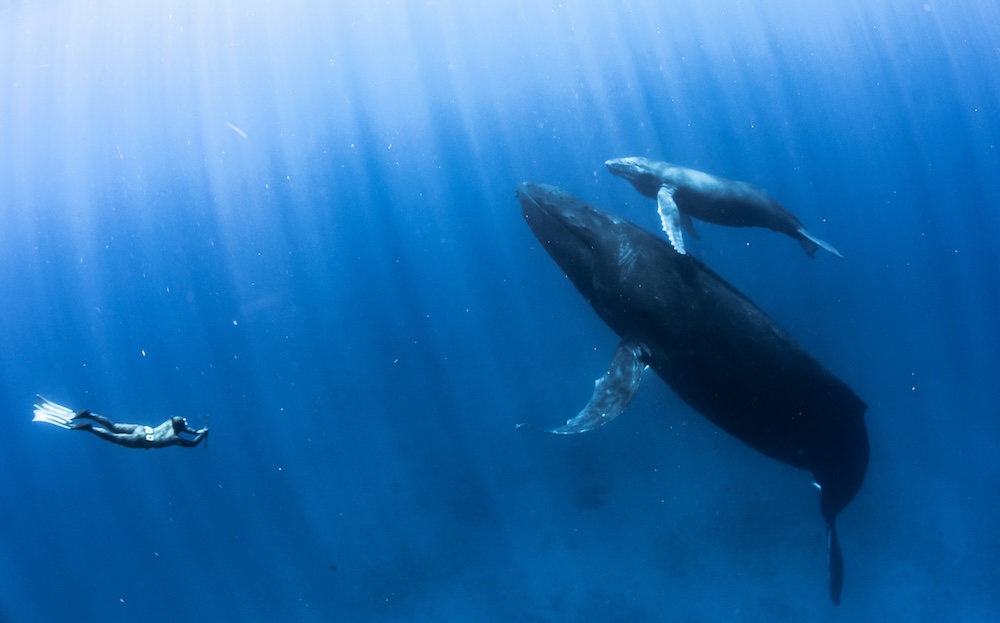The figure is staggering: 20,000 whales die each year from collisions with ships. That’s not a typo—it’s a shocking estimate credited to Dr. Douglas McCauley, Director at UCSB’s Benioff Ocean Science Lab.¹
These are not fringe species; they include the grandest giants—blue, fin, humpback, and gray whales—slaughtered by our vessels in shipping lanes that intersect their migration and feeding paths.²
A Hot Zone Off California
Since 2015, 118 whale–vessel strikes have been officially reported along the U.S. West Coast, with 75 of those occurring in California waters.³ But that’s just the tip of the iceberg—most strikes go unreported or undetected.
In 2025 alone, 24 whales have died in and around San Francisco Bay, with at least nine confirmed ship-strike deaths, mostly among gray whales.⁴ These numbers surpass totals from infamous “Unusual Mortality Events” in recent years and may represent only a fraction of the actual carnage.⁵ ⁶
The Invisible Killers
Most struck whales sink or drift away without a trace. In Chile—a global ship-strike hotspot—only 10% of dead whales are retrieved, making reported cases gross undercounts.⁷
From 2016 to 2025, roughly 40% of humpback whale deaths along the Atlantic showed signs of human interaction—vessel strikes or fishing gear entanglement.⁸
Why Ships Kill So Easily
- Speed kills: At just 15 knots, the chance of fatality in a whale strike is 79%.⁹
- Global overlap: Around 92% of whale ranges overlap with major shipping routes.¹⁰
Solutions That Work — If We Enforce Them
The data is clear: slowing vessels to 10 knots or less can cut ship-strike deaths by about 50%.¹¹ Programs like Protecting Blue Whales and Blue Skies and Whale Safe give incentives for compliance—but enforcement remains voluntary.
Even worse, NOAA pulled back proposed expansion of protections for critically endangered North Atlantic right whales in early 2025.¹²
2025’s Wake-Up Call
The spike in whale deaths off San Francisco has marine scientists alarmed.⁶ Lawmakers are demanding answers.⁵ The Marine Mammal Center and ocean advocates are demanding action—not just conversations.
Where and How Strikes Happen
Ship strikes don’t happen randomly. They are heavily concentrated along major shipping routes that overlap with whale feeding grounds, migration corridors, and breeding areas.
- Pacific Ocean: Large commercial vessels moving between Asia and U.S. ports pass directly through areas where blue whales, humpbacks, and fin whales feed on krill blooms. High-risk zones include waters off Los Angeles, Long Beach, San Francisco, and Seattle.
- Atlantic Ocean: Busy shipping lanes along the Eastern Seaboard overlap with the entire range of the North Atlantic right whale, from Florida to Canada.
- South America: Southern right whales face ship-strike threats near Argentina’s Patagonian coast.
- Asia and Mediterranean: Bryde’s whales are struck in the Gulf of Thailand, while fin whales in the Mediterranean face danger from ferries and cargo ships.
Why Whales Can’t Always Avoid Ships
Whales are not slow or unaware—they are highly intelligent and capable swimmers. But several factors make ship strikes difficult to avoid:
- Noise pollution masks ship approach — The constant hum and roar of engines and propellers hide the sound of oncoming vessels.
- Vessels travel too fast — At 15 to 20 knots, a whale has only seconds to react.
- Whales surface to breathe — Surfacing in a ship’s path is often unavoidable during feeding or migration.
- Behavioral patterns — Blue whales feeding on krill near the surface are particularly vulnerable. Calves staying close to mothers are slower and less agile.
Policy Failures and Industry Inaction
Ship strikes are not an unavoidable cost of doing business at sea—they are the result of policy loopholes, industry resistance, and political reluctance to prioritize marine life over corporate convenience.
Voluntary Speed Limits Are a Joke
In many high-risk areas, vessel speed limits are “recommended,” not enforced. This means a cargo ship can race through whale feeding grounds at 20 knots with zero legal consequence—even though slowing to 10 knots can dramatically reduce fatal strikes.
In California’s Voluntary Vessel Speed Reduction zones, compliance is around 60–70% for major shipping companies, with some outright ignoring the guidance.
The Shipping Industry’s Favorite Excuses
- “It’s too costly” — Slowing down barely affects schedules and could save fuel.
- “Whales are hard to detect” — Technologies like acoustic monitoring, aerial drones, and satellite tracking already exist but are underused.
Weak Laws and Weaker Enforcement
The Marine Mammal Protection Act was meant to protect whales, yet loopholes and political pressure from shipping and fishing industries have weakened its impact. In international waters, there is no binding agreement mandating vessel slowdowns—even in critical habitats.
Incrementalism is Killing Whales
Conferences and pilot programs mean nothing without enforcement and penalties. Every year of delay means tens of thousands more whales die unnecessarily.
What Needs to Happen Now
- Make 10-knot speed limits mandatory year-round in all high-risk whale habitats.
- Enforce compliance with fines high enough to deter violations.
- Require all large vessels to use real-time monitoring systems.
- Prohibit nighttime transits in critical whale zones.
- Push for an international, binding whale-protection agreement.
Final Thoughts
We are failing these giants. Twenty thousand deaths per year. Lifespans cut short. Families torn apart. And for what? A shipping schedule? Economic convenience?
It’s time to stop treating whale deaths as acceptable “collateral damage.” We can fix this—with enforcement, with policy, and with public will. Every collision avoided is a saved life. Every slowdown is a step toward ocean justice.









Reader Interactions